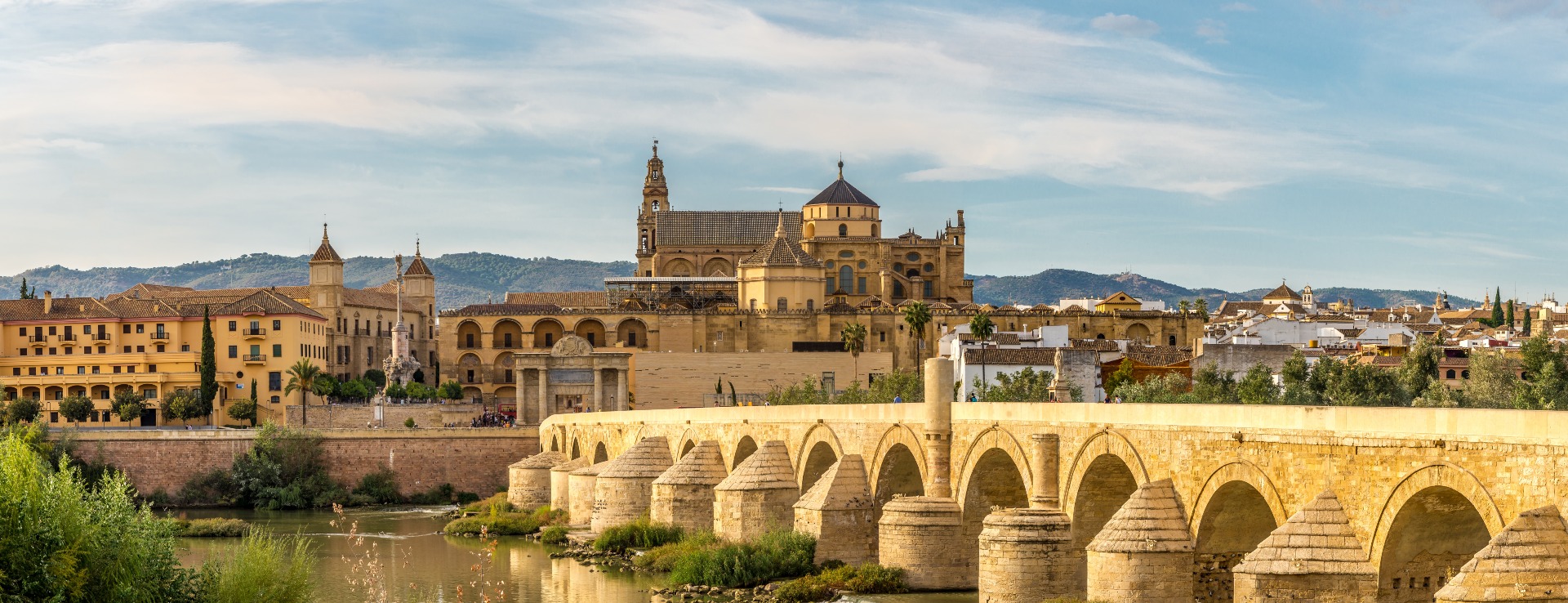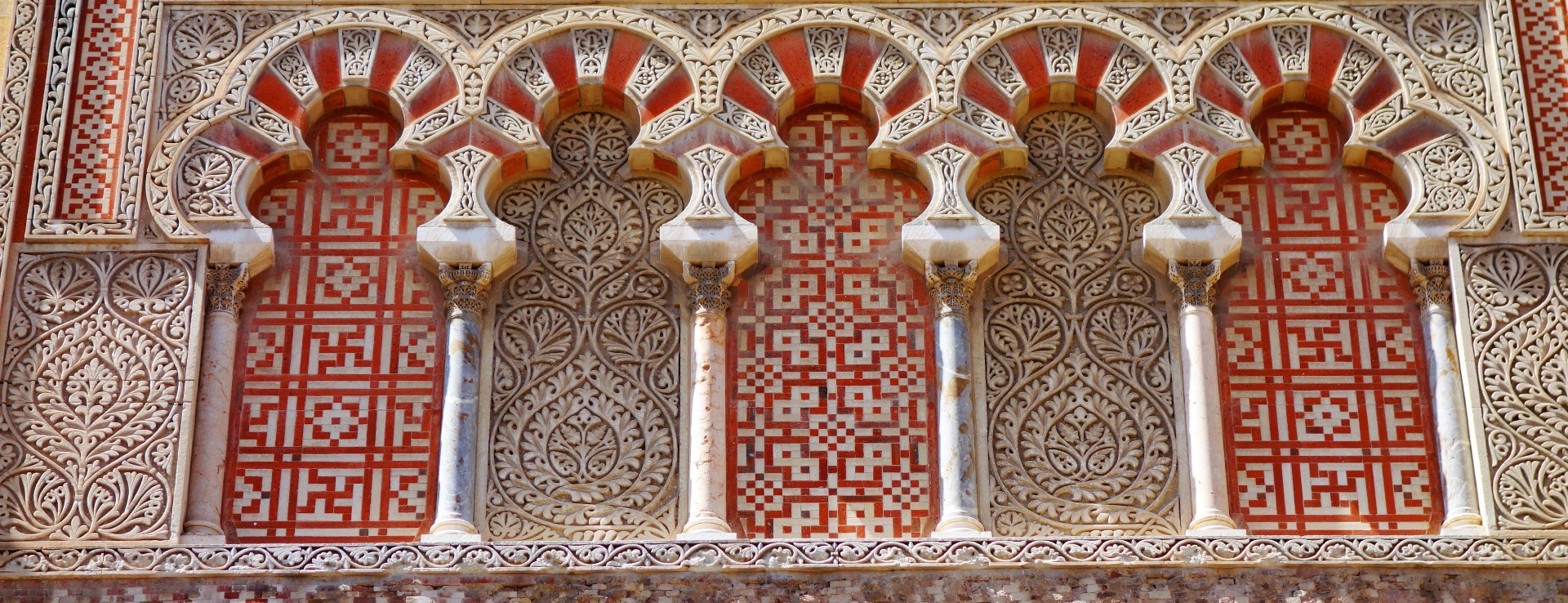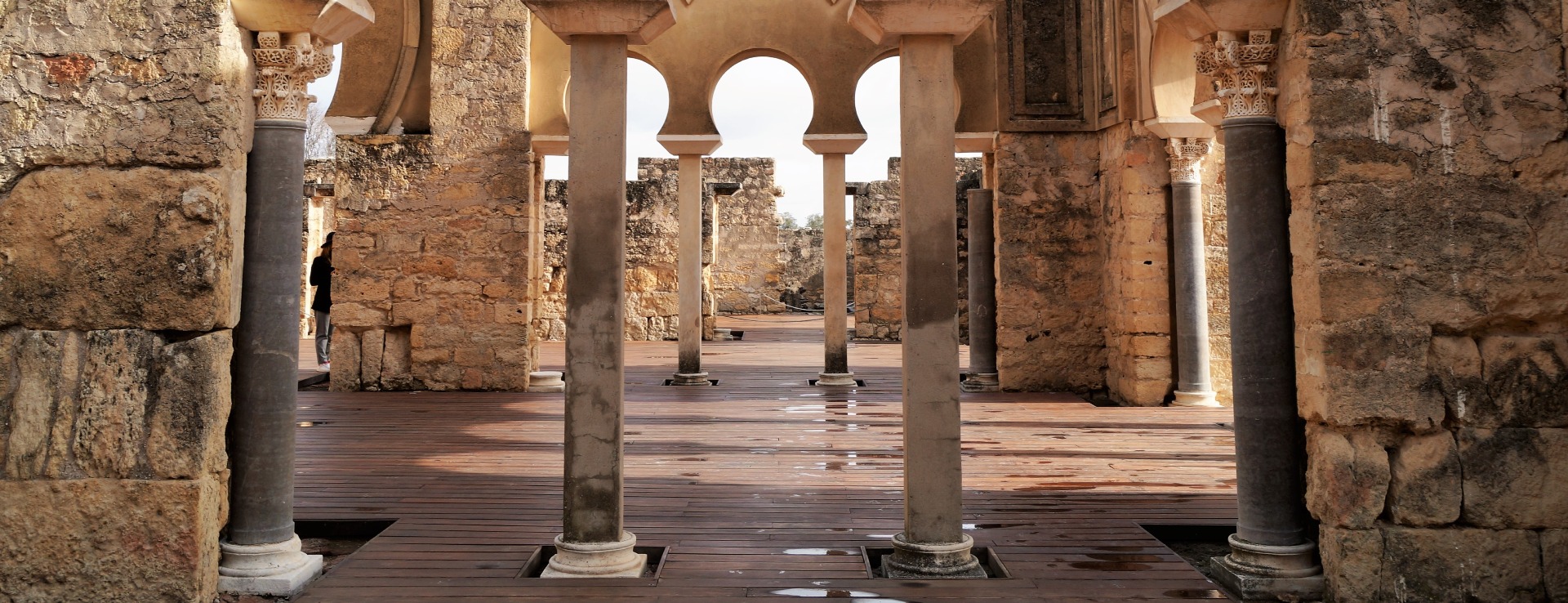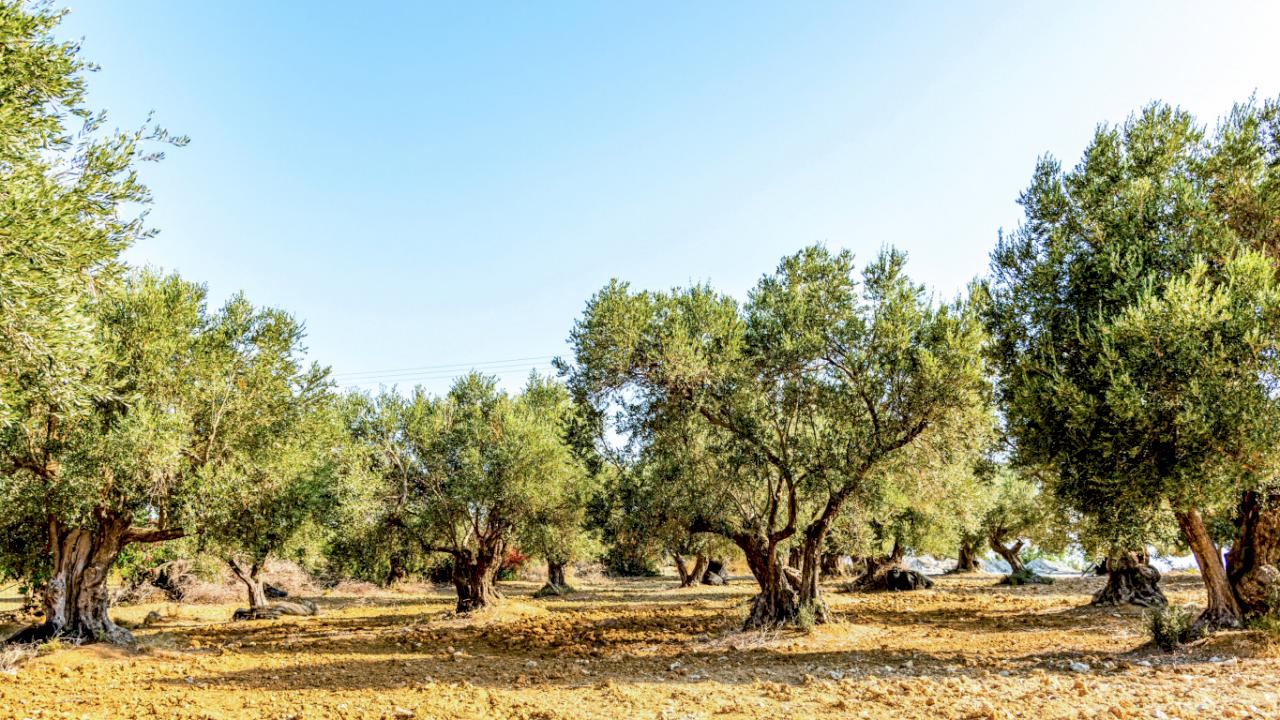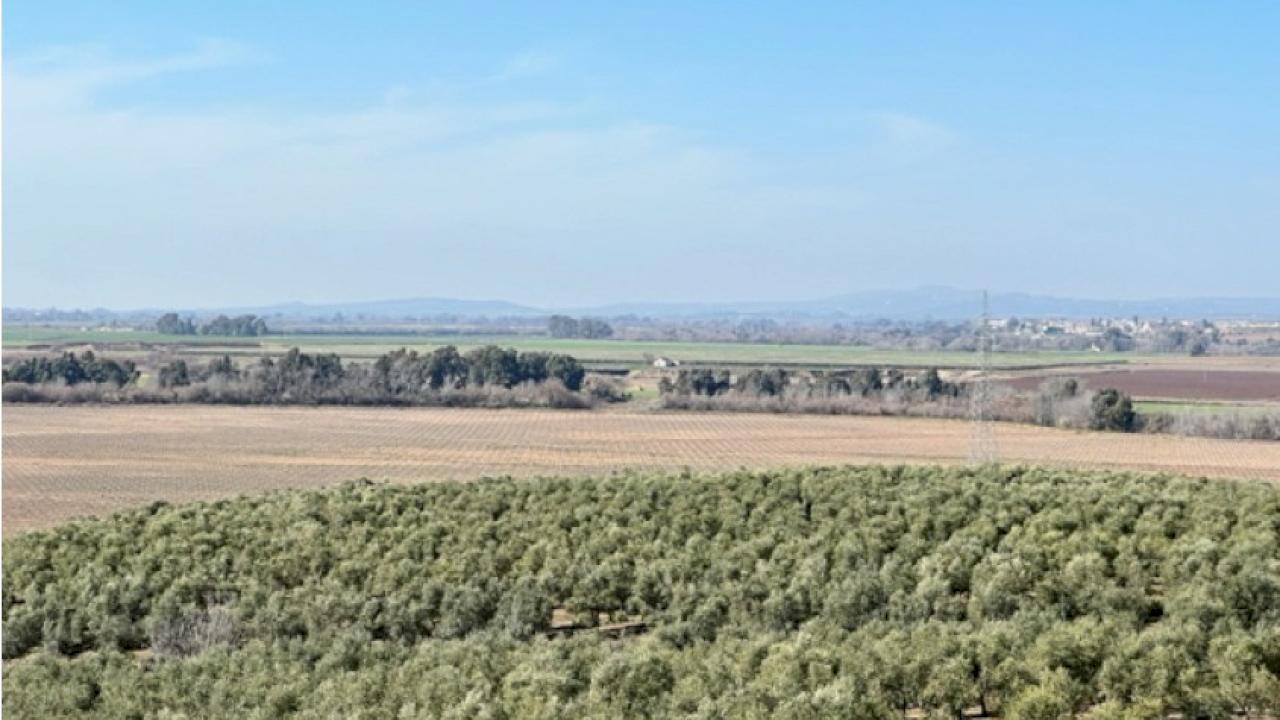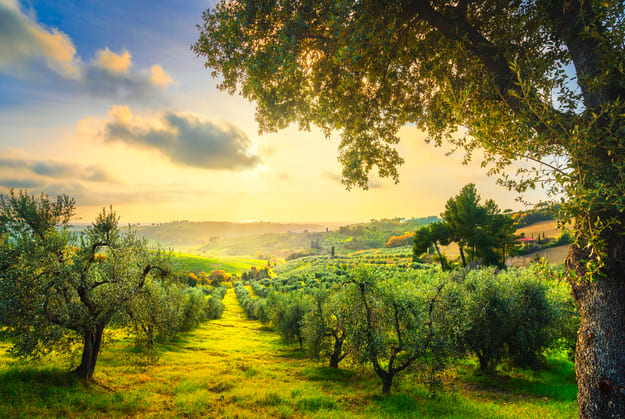Find your olive grove or oil mill
Infographic of the area
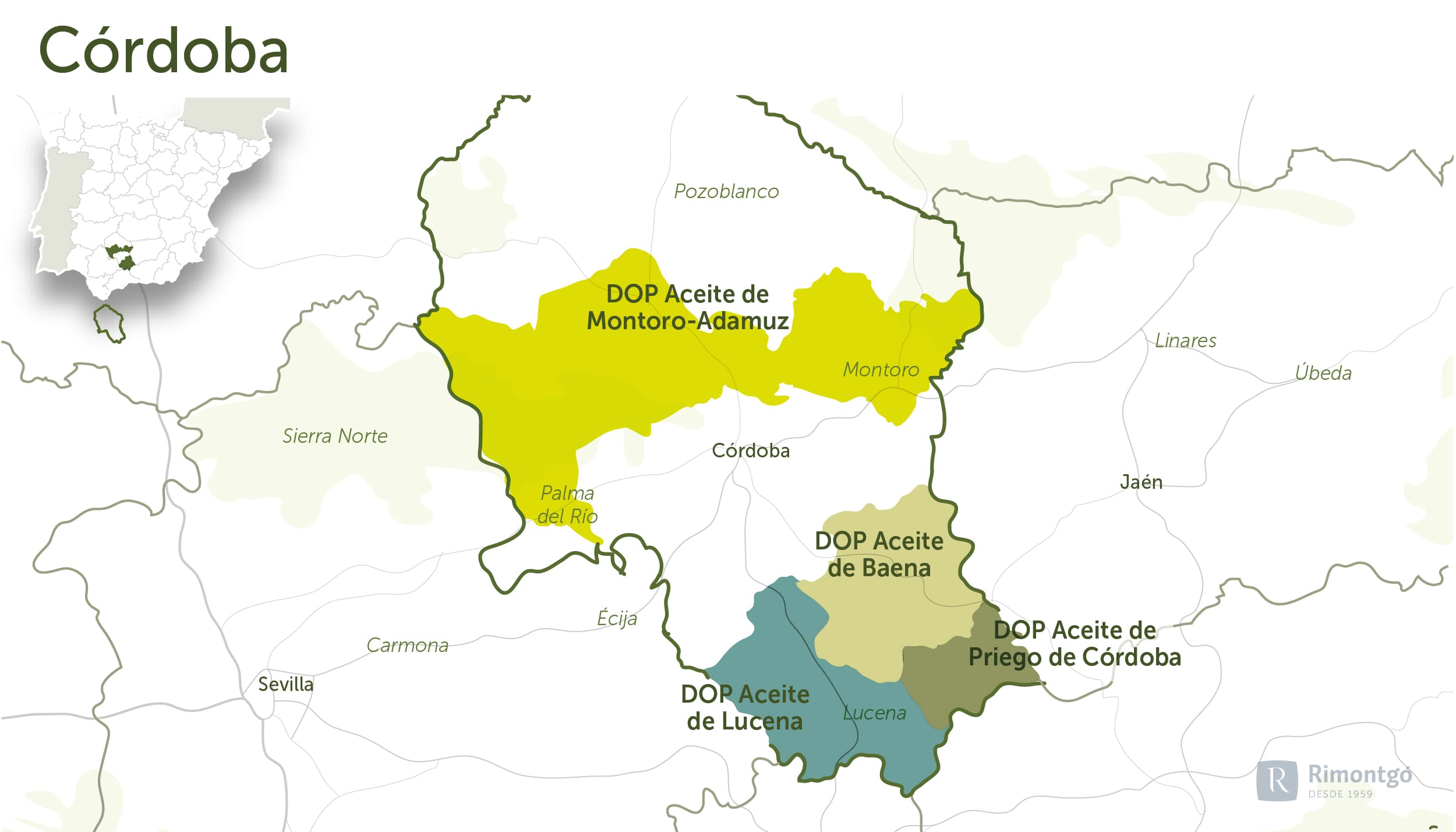
Córdoba
The province has 373,200 hectares of olive groves, with a growing trend in recent years. This season, Cordoba has produced approximately 9% of the world's olive oil and 20% of the oil produced in Spain.
Jaen, with 40% of the surface area, and Cordoba, with another 24%, are the two main olive oil producing provinces in Andalusia. Between the provinces of Jaen and Cordoba 64% of all the annual olive oil produced in Spain is produced.
In the province of Cordoba there are several olive oil DOs, DO Baena, DO Priego de Cordoba, DO Montoro-Adamuz and DO Lucena.
DO PRIEGO DE CORDOBA
The area covered by the Priego de Córdoba Designation of Origin comprises 29,628 hectares and includes the municipalities of Almedinilla, Carcabuey, Fuente Tójar and Priego de Córdoba.
The Designation of Origin is located in the southeast of the province of Córdoba, in the heart of the Natural Park of the Subbetic Hills, bordering the provinces of Jaén and Granada. It is the most rugged and highest altitude area in the province, with most of the olive groves located in areas above 700 metres above sea level, reaching up to 100 metres.
Varieties
The extra virgin olive oil is obtained from the Picudo (60%), Hojiblanca (25%) and Picual (15%) varieties.
History
Economically, the cornerstone of the Hispano-Roman population of the Priego region was agriculture, based on the famous Mediterranean triad (wheat, vines and olives). There is archaeological evidence of stone elements dedicated to the olive press, which can be dated to around the 2nd century AD.
Climate and soils
The production area of the 'Priego de Córdoba' Designation of Origin is located in the south-east of the province of Córdoba, in the heart of the Sierras Subbéticas Natural Park, bordering on the provinces of Jaén and Granada. The olive groves are found at altitudes of over 700 metres.
The abundance of springs, rivers and streams has generated a permanent process of erosion facilitated by the work, with the formation of numerous valleys and depressions in which a deep working layer accumulates, which allows for excellent development of olive cultivation. The olive grove occupies approximately 30,000 hectares. It is almost the totality of the cultivated land.
Its main rivers include the Salado, the Caicena and the Zagrilla, which flows into the Juan-Genil system and the Guadajoz.
The soils are made up of limestone loams, dolomitic limestones, clays and sands with limestone and gypsiferous pebbles.
A peculiar microclimate, characterised by high rainfall and large temperature fluctuations (from 2 °C in January to 33 °C in July), together with a rugged and mountainous terrain, give this area specific nuances that make it different from any other.
The risk of frost damage is present in the area during long winter periods. This is perhaps one of the main reasons why the frost-resistant Picudo variety is so well established.
The oils from this appellation are among the most awarded in the world.
Oil mills
Aceite Aroden Hispania S.L, Almazara de Muela S.L, Almazaras de la Subbética S.L.
Eliá Oil Company S.L., Manuel Molina Muñoz e Hijos S.L., Marín Serrano El Lagar S.L.,
S.C.A. Ntra. Sra. De La Cabeza, S.C.A. Ntra. Sra. del Carmen de Almedinilla, S.C.A. Olivarera La Purísima, S.C.A. Olivarera Ntra. Sra. del Carmen, Sucesores de Morales Morales S.L., Olivia González S.L., Gomeoliva S.A., Marín Serrano el Lagar SL, Aceites Vizcántar S.L. and X 37 Grados Norte S.L.
DO BAENA
The PDO covers the municipalities of Baena, Doña Mencía, Luque, Nueva Carteya, Zuheros, Castro del Río and Cabra, all in the province of Córdoba. The Baena PDO covers an area of 60,000 ha of olive groves.
The lands registered in the D.O. are located in the south of the province of Cordoba, covering 60,000 hectares of olive groves, with 7,200,000 olive trees, which produce an average of 150 to 200 million kilograms of olives and between 30 and 45 million kilograms of oil.
Varieties
The main variety is the Picudo or Carrasqueño de Córdoba, and it is accompanied by other varieties such as: Lechín, Chorrúo or Jardúo, Pajarero, Hojiblanca and Picual.
History
The Comarca of Baena is an area with a proven olive-growing tradition. Pre-Roman, Roman and Arab traces bear witness to this. The people of this land knew how to choose the olive tree best suited to the soil and climate of the area, the Picudo. Primitive mills were scattered throughout the olive groves and these people discovered and accredited the essence of the best olive groves and achieved the reputation of their region for the quality of the virgin olive oil they obtained.
Climate and soils
Both the orography of the region and its geological constitution are highly variable. The gentle undulations of the Campiña contrast with the steep slopes of the Penibética in the south. From the alluvial plains in the north, through the gentle Miocene undulations to the steep slopes in the south, there is a whole range of physiographic, geological and lithological features.
The soils are generally chalky, with a high calcium carbonate content, which is why the olive groves in this area are the ideal environment for their perfect development.
The climate of the region alternates mild winters with not excessively hot summers, favouring the presence of different varieties of olive. The rains generally fall in the months of November, December, February and March. The olive groves are located at altitudes of between 400 and 600 m above sea level.
The average annual rainfall in the area is between 600 and 800 mm, although in some areas of the area it is below the optimum for this crop.
Olive oil mills
S.C.A. Olivarera Ntra Sra de Guadalupe, S.C.A. Olivarera Germán Baena, Nuñez de Prado Oliva Virgen, S.L., Ecoalmazara 1919 S.L., S.C.A. de Labradores y Ganaderos, S.C.A. Olivarera Ntra Sra de la Consolación, S.C.A. Almazara de Luque, Sucesores de Hnos López S.A., S.C.A. Olivarera Ntra. Sra. del Rosario de nueva S.C.A., Olivarera Ntra. Sra. Del perpetuo Socorro, Orobaena S.A.T., S.A.T. Aceites del Monte Horquera, S.C.A.O San Isidro, Peña de Baena S.L.U., S.C.A. Ntra. Sra. de la Salud, S.C.A.O. Virgen de la Sierra de Cabra and Cortijo Suerte Alta S.L.
DO Montoro-Adamuz
The Montoro-Adamuz Protected Designation of Origin covers 55,000 hectares of olive groves located in the Sierra Morena in the municipalities of Adamuz, Montoro, Espiel, Hornachuelos, Obejo, Villaharta, Villanueva del Rey and Villaviciosa de Córdoba.
Varieties
The virgin olive oil is obtained from the olive varieties that exist in the region: Picual, Nevadillo Negro, Lechín de Sevilla, Picudo and Carrasqueño de la Sierra.
Its oil has a high Oleocanthal content and is the richest in polyphenols with an antioxidant effect and bioactive substances. The Oleocanthal molecule has an anti-inflammatory power comparable to that of the well-known non-steroidal inhibitor Ibuprofen, but Oleocanthal has no side effects on health.
The native Picual olive variety 'Nevadillo Negro' is particularly rich in these polyphenols.
The main varieties are considered to be the Picual and the native Nevadillo Negro. This coupage represents 98% of the DO olive oil production. Nevadillo Negro is one of the olive varieties richest in polyphenols. The high polyphenol content gives the oil a characteristic bitterness and spiciness as well as excellent stability against oxidation.
History
In the 3rd century B.C., Rome entered the history of Andalusia. Since its settlement in the upper Guadalquivir, 200 years BC, the Roman colonisation has left towns and villages along the banks of the river, some newly formed, such as Sacili Marcialis (now Alcurrucén and the districts of Adamuz and Pedro Abad), others coming to life, such as Epora, in Roman times, now Montoro, among many others.
In Roman times, oil from this region was sent to Rome as one of the so-called 'oils of Baetica'. They were transported by river via the Guadalquivir River.
It is easy to suppose that Montoro and Adamuz were among the cities that supplied most of the oil to the Conventus Cordubensis and to areas outside Hispania and Baetica. An example of this can be seen in the large number of fragments of Roman amphorae that exist on the well-known Mount Testaccio in Rome, a mountain formed by the accumulation of the remains of amphorae once used for oil, most of which come from Baetica, as they bear a series of inscriptions and seals referring to their place of origin.
With the arrival of the Germanic peoples and the Arabs in the 8th century, this crop continued to be cultivated, as this culture had to supply itself with this product for culinary uses, as one of the precepts laid down in the Koran was the prohibition of eating pork in their diet. This reason explains why they could not use any kind of animal fat to season their dishes. This was also the case for the Jewish communities that lived there.
At the end of the 15th century and the beginning of the 16th century, the Cordovan area accounted for 38.62% of Andalusia's olive oil production in the early 16th century, while Jaén accounted for only 16.76%, with the remaining part going to the Aljarafe area of Seville.
In 1550, reference is made to the existence of olive groves in Villaviciosa de Córdoba planted by Hieronymite monks.
In the first half of the 19th century, the expansion of the province's olive-growing area increased as a result of the appropriation of former communal lands and the privatisation and dissociation of noble and ecclesiastical estates, due, among other reasons, to the strategic location of these two municipalities on the main road linking them to Madrid.
The oil mills of the Sierra de Montoro-Adamuz, based on beam presses, which reached their peak in the 19th century, are one of the greatest examples of industrial archaeology in the province of Cordoba. The municipal district of Montoro became the world's leading producer of olive oil during the 19th century cultivation fever.
Climate and soils
The district is situated on a hillside, with a steep topography, an average altitude of 425 m, facing south, and a high level of sunshine.
The fact that there are two Natural Parks (Sierra de Hornachuelos and Cardeña-Montoro) within the municipalities of the area has favoured the maintenance of this mountain olive grove over time.
The soils in the area are characterised mainly by their shallow depth, moderate to abundant stoniness, significant erosion and shallowness, mainly due to the steep slope of the land, medium to low clay content, which results in low fertility, and the absence of free calcium carbonate, with a moderately acidic reaction. All these characteristics, and in particular the fact that the soils are calcareous, help to block the upward flow of iron to the plant, retaining water much better as the soils are aggregated, thus allowing the olive groves to be more humid.
The climate has a thermal regime characterised by a very marked contrast between the hot summer season and the cold winter season, and low average rainfall, which is concentrated during the winter and spring.
The climate is Mediterranean with some continental features. Rainfall peaks in the winter months and is less frequent in summer, so that the maximum humidity in winter does not exceed 77%, while the minimum in summer drops to 34%. The inland location of the county gives it a degree of continentality that is evident in both the daily and annual temperature fluctuations.
In this region there are high levels of evapotranspiration and there is a high degree of sunshine in summer-autumn, the time when the fruit is formed and ripens.
Olive oil mills
Coop. Agrícola Ntra. Madre del Sol, Olivarera de Montoro S.C.A., Montoroliva S. L., Olivarera del Guadiato S.C.A. and Aceites Prieto Reina.
Lucena DO
The municipalities of the DO are Aguilar de la Frontera, Benamejí, Encinas Reales, Iznájar, Lucena, Montilla, Moriles, Monturque, Puente Genil (the right bank of the municipal district, bordering the area known as Miragenil) and Rute.
Varieties
The oils covered by the 'Lucena' Protected Designation of Origin are made from more than 90 % of olives of the Hojiblanca variety grown in the area of production of the Designation of Origin, which makes them very smooth and sweet on the palate. The other varieties accepted and present in the oils (Arbequina, Picual, Lechín, Tempranilla, Campanil, Ocal and Chorrúo) give the oils new qualities which improve their stability above all by increasing their polyphenol content, while slightly increasing their fruitiness and providing a touch of bitterness which enhances the flavour of the oils covered by the 'Lucena' DO.
Of the varieties used, Hojiblanca was the most suitable and recommendable, as it is the most suited to the characteristics of the soil: chalky, clayey and siliceous soils.
The term 'Lucentina' is associated with the Hojiblanca variety. It can thus be seen that the area in which the Hojiblanca variety is grown has its centre and origin in the municipality of Lucena, and it is from here that it spreads to neighbouring areas such as Antequera in Malaga, Estepa in Seville and Loja in the province of Granada.
History
The protected production area was historically included in what the Romans called 'Baetica', from where they obtained olive oil for the metropolis, so that it can be said that olive-growing in this area is very ancient.
In Lucena, there is archaeological evidence of more than forty sites from the Roman period (1st and 2nd centuries), most of which are ruins of 'fundi' farmhouses which proliferated during this favourable period for export to other parts of the Roman world, mainly oil and wine from the south of Córdoba. The economic and cultural expansion of Lucena originated in the Jewish period, as it was a very important centre of Judaism and a first-rate commercial centre, as we are told in writings from the 10th century in which Lucena is mentioned as a trading town for agricultural products such as wine, liqueurs and oil.
At this time, it was the municipality of Puente Genil which was at the forefront of the oil extraction and marketing industry, with important mills such as the so-called Molino del Marqués (1648).
In Arab times, al-Yussana (Lucena) was mentioned as a municipality in which, among other crops, the olive tree was very important and highly valued. In various writings from the years 714-715, reference is made to Lucena as a municipality with abundant water, olive trees and other fruit trees.
The olive grove was the most representative crop in the area comprising the Señorío de Aguilar (Aguilar de la Frontera, Montilla, Monturque, Puente Genil and Montalbán).
Climate and soils
In terms of geology, the compact limestone, marl, iridescent and conchiferous limestone, limestone and chalk, which characterise the Jurassic terrain, are those with the best conditions for the development and vegetation of the olive tree, which results in higher oil production and better oil quality.
The average altitude above sea level in the production area ranges from 171 m in Puente Genil to 800 m in Iznájar.
Unlike in the rest of the province, there are hardly any features of continentalisation in the 'Lucena' PDO area.
Olive oil mills
Aceites Fuente Grande S.A. 'Gomeoliva' (Priego de Córdoba), Almazaras de la Subbética S.C.A. (Carcabuey), Cooperativa Agrícola La Aurora S.C.A. (Montilla), Aceites Fuente Grande S. A. 'Gomeoliva' (Priego de Córdoba), Aceites Fuente Grande S. A. "Gomeoliva" (Priego de Córdoba), Cooperativa Olivarera de Lucena S.C.A. (Lucena), Cooperativa Olivarera de San José S.C.A. "Oleollanos" (Los Llanos-Rute) and Cooperativa Olivarera Nuestra Señora de Araceli S.C.A. (Lucena).
Subscribe to our mailing list to receive news about olive groves and oil mills.

